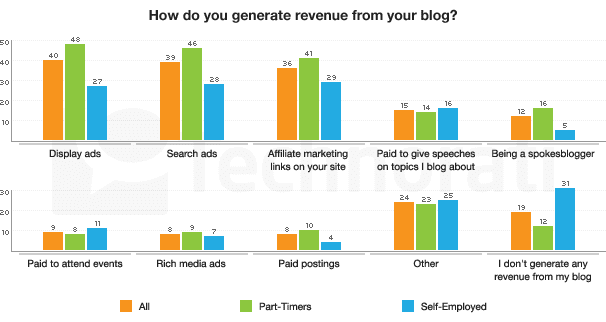When social marketing impacts brand value!
WetPaint, a community site, and the Altimeter Group, a strategy consulting firm, conducted an extremely interesting (and downloadable) study using the online social media brand database Engagement db, which measures the online engagement of brands.
They created a ranking that takes into account the different brand intervention types, in social and community media.
Top 40 extracted from Engagement db
This ranking is taken from the “Best Global Brands 2008”, an annual list of the top 100 rated brands by BusinessWeek/Interbrand.
Media and social tools considered were:
- Blogs
- Social and community brand networks
- External social networks (Facebook, Linked’in, MySpace….)
- Twitter
- Discussion forums
- Photo and video community sites (Flickr, YouTube…..)
- Wikis
- Rating and tagging sites
The ranking is done by taking into account the number of media used, as well as the level of media participation, by using criteria specific to each media.
This allows to identify 4 types of social media intervention:
- The “Mavens” who rank among more than 6 types of highly influential social media. Typical brands in this category are, notably, Starbucks, Google, Dell, even SAP and Accenture. They dominate the list.
- The “Butterflies” who also have a very diversified presence, but their implication is, at the moment, weaker, like American Express or Hyundai.
- The “Selectives” such as H&M or Philips are very involved in a limited number of social media.
- The “Wallflowers”, like McDonalds or BP, who are globally behind.
It is not surprising to find that Starbucks ranks number one on this list, figures at the top of Facebook brand fan pages, and has a high influence and presence on Twitter as well. Starbucks, a real “living place” in the real world is also a social relation network on the Internet.
The study done by Wetpaint and the Altimeter Group is also very interesting in that it finds a correlation between the level of intervention in social marketing and the financial performance of the companies studied, as published by Yahoo Finance or Marketwatch.
The authors of the study, Ben Elowitz, CEO of Wetpaint and Charlene Li, partner of the Altimeter Group, indicate that:
“While much has been written questioning the value of social media, this landmark study has found that the most valuable brands in the world are experiencing a direct correlation between top financial performance and deep social media engagement. The relationship is apparent and significant; socially engaged companies are in fact more financially successful”.
Even though no quantifying data exists to determine the cause and effect relationship between social media engagement and financial results, it is still possible for the authors of the study to explain this relationship:
“Social media engagement and financial success work together to perpetuate a healthy business cycle: a customer oriented mindset stemming from deep social interaction allows a company to identify and meet customer needs in the marketplace, generating superior profits. The financial success of the company, in turn, allows further investment in engagement to build even better customer knowledge, thereby creating even more profits – and the cycle continues”.
Social marketing, therefore, would be the new way of applying the proven concept of a business oriented towards its customers, or customer centric.
As social marketing becomes more and more important due to the growth of social media, the brands involved in these media should, in time, replace the brands that don’t get involved.
Is social media going to overturn the hierarchy of brands? There is definitely indication of movement, as illustrated in the graph below made by Sherpad by relating the Engagement db ranking of the study with the BusinessWeek/Interbrand “Best Global Brands 2008” list.
Shown above, the top 25 Engagement db (vertical yellow line), horizontal axis (growth or loss of position compared to the BusinessWeek list).
This section is dominated by technology companies. We even note the presence of B2B companies like SAP, Accenture, and Oracle, next to Google, Amazon, Ebay, Dell, and Blackberry. However, Starbucks surpasses all of them. Toyota also still figures as the top brand in cars, even though it shows no progression.
Shown above, the top 26-50 Engagement db (vertical yellow line), horizontal axis (growth or loss of position compared to the BusinessWeek list)
This section regroups the consumer goods companies most engaged in social marketing; Nintendo for games, Panasonic for electronics, and Gucci for fashion.
Pizza Hut subscribes to the logic of Starbucks and as for cars, even with Lexus, Toyota is the most engaged.
Coca-Cola, top ranking brand on the BusinessWeek list moves down 49 places in the Engagement db ranking, despite an effort of Facebook and Twitter who will end up reversing this trend.
Shown above, the top 51-100 Engagement db (vertical yellow line), horizontal axis (growth or loss of position compared to the BusinessWeek list)
This last part of this list is divided into two sections:
Brands that show an increase: Several fall into the fashion category, Prada, Hermès, Rolex, Cartier, Armani, Tiffany. This category is very much at the forefront on Facebook. Equally present are wines and spirits, Moet & Chandon, Smirnoff, which illustrate the festive and social nature of….social networks!
Brands that show a decrease: These are numerous, and with an economically weak year, the fact that they are banks is not surprising, Morgan Stanley, HSBC, Goldman Sachs, Merril Lynch, and JP Morgan.
German made cars, Mercedes Benz, BMW, Porsche, and VW show a negative spiral, the opposite of Japanese cars.
Among everyday goods and food items like Marlboro, Budweiser, Gillette, Kellogg’s, Heinz, Wrigley’s, and Dannon, these are still far from the positions of Nestlé, Nescafé, and Nivéa.










































